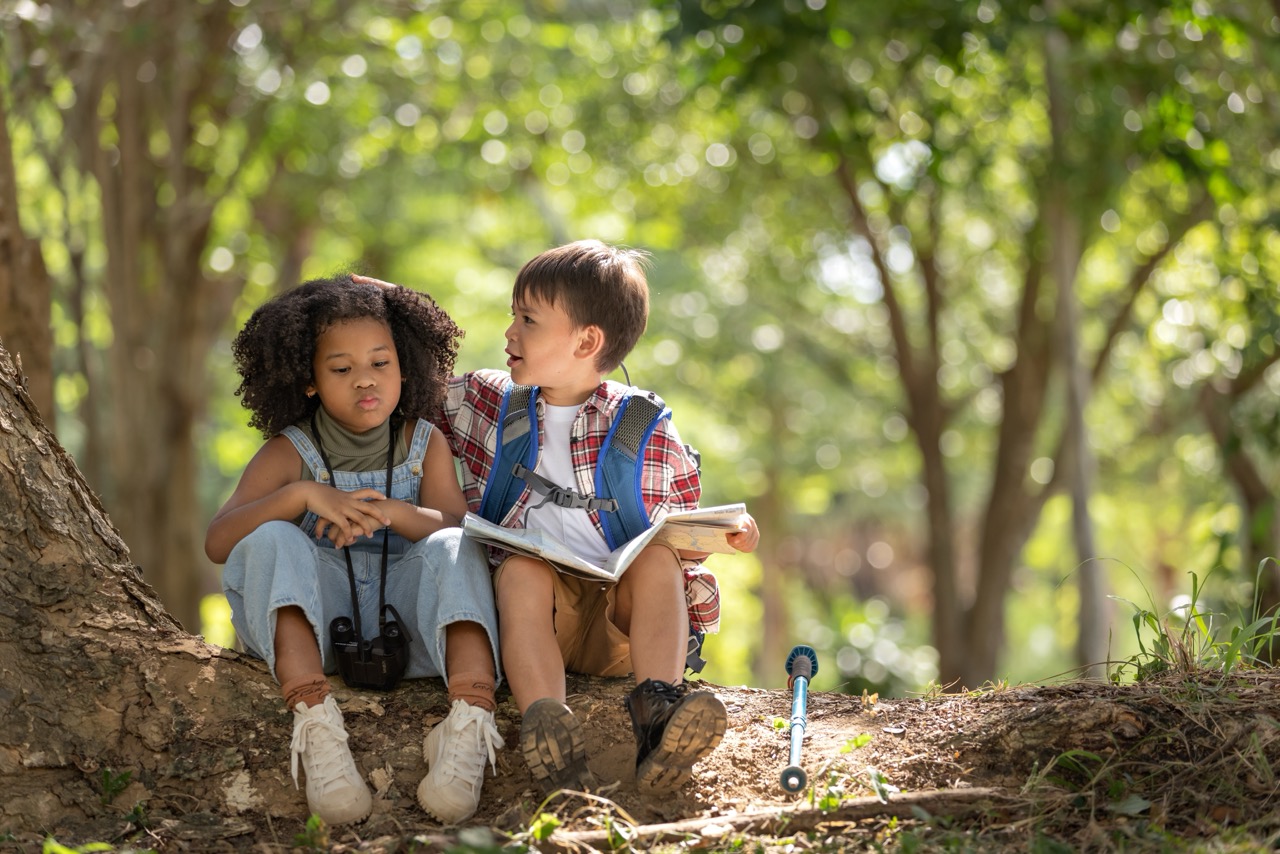The charm of children’s literature is often found in its whimsical elements, and few are as enchanting as stories featuring talking animals. From classic fables to modern animated tales, these narratives have captivated the hearts and minds of young readers for centuries. But what is it about animal characters that resonates so deeply with children? This article explores the myriad reasons why kids love stories with talking animals, examining their magical allure, psychological benefits, and roles as vehicles for empathy and imagination.
The Magical Allure of Talking Animals in Children’s Stories
Talking animals tap into the whimsical and fantastical aspects of childhood, creating a world where the impossible becomes possible. Children are naturally drawn to the idea of animals that can speak, think, and act like humans. This element of fantasy captures their imagination, allowing them to escape into realms where the usual rules don’t apply. Whether it’s a wise old owl imparting lessons or a mischievous fox outsmarting his enemies, these characters add a layer of enchantment that makes stories irresistible.
Moreover, talking animals serve as relatable figures for children, who often see themselves mirrored in these characters. A clever rabbit or a brave lion may embody traits that kids aspire to develop, making them feel connected to the narrative. This sense of identification fuels their desire to engage with the story, prompting them to think about their own experiences and how they might handle similar challenges. The magic of talking animals lies not just in their charm, but in their ability to bridge the gap between reality and fantasy.
Finally, the universality of animal characters allows stories to transcend cultural and linguistic barriers. Regardless of the setting, kids can relate to the emotions and experiences of animals, whether they are frolicking in a forest or navigating the complexities of family. This broad appeal makes talking animals a staple in children’s literature, as they continue to entertain and enchant generations of young readers.
Unpacking the Psychological Benefits of Animal Characters
The inclusion of animal characters in children’s stories is not merely a stylistic choice; it also provides important psychological benefits. For young readers, anthropomorphized animals can serve as a safe vehicle for exploring complex emotions and social situations. Children often find it easier to process their feelings when they see them reflected in a character that is not human. This distance allows for exploration without the weight of personal experience, fostering emotional growth and understanding.
Moreover, stories featuring talking animals often present moral dilemmas and lessons in a way that is accessible to children. These narratives can introduce themes of friendship, teamwork, and conflict resolution without the direct implications that might come from human characters. This indirect approach can make difficult concepts easier to grasp, providing children with tools to navigate their own social landscapes. For instance, a story about a group of animals working together to overcome adversity can reinforce the importance of cooperation and empathy.
In addition, the imaginative nature of stories with talking animals can bolster cognitive development. Research shows that engaging with fantastical narratives can enhance critical thinking skills, boosting problem-solving abilities and creativity in young minds. The ability to contemplate ‘what if’ scenarios leads to greater cognitive flexibility, an essential skill as children progress in their education and personal lives.
How Talking Animals Spark Imagination and Creativity
Talking animals ignite the flames of creativity in children by encouraging them to envision worlds beyond their own. When children encounter a narrative featuring anthropomorphic characters, they are invited to explore unique settings, scenarios, and possibilities. These stories often encourage kids to think outside the box, envisioning new adventures and outcomes for their favorite characters. This imaginative engagement nurtures creativity, allowing children to develop their narrative skills and artistic inclinations.
Furthermore, stories with talking animals often present situations that challenge conventional thinking. For example, a story where a small mouse outsmarts a cunning cat opens the door to discussions about intelligence versus strength, or cleverness versus size. Children are stimulated to ask "What if?" and "How could this happen?" These types of inquiries foster a sense of curiosity and exploration, pushing children to formulate their own stories and ideas based on the characters they love.
The creative spark that comes from engaging with talking animals can extend beyond literature into various forms of artistic expression. Children may feel inspired to draw, act out, or write their own stories featuring their beloved animal characters. This creative exploration enhances their communication skills, boosts their confidence, and allows them to express their unique perspectives on the world.
The Role of Empathy in Stories Featuring Animal Protagonists
Empathy is a crucial skill for children as they learn to navigate their social environments. Narratives that feature talking animals can serve as powerful tools in fostering this emotional intelligence. By placing themselves in the paws of an animal protagonist, children are encouraged to understand and empathize with feelings and experiences that may be different from their own. This emotional connection becomes particularly potent when characters face challenges, as children learn to navigate feelings of sadness, joy, and conflict through the lens of their favorite animal friends.
Moreover, stories that depict animals forming bonds, facing adversity, or making sacrifices can teach children important lessons about kindness and compassion. For instance, a tale of a loyal dog who stands by its owner teaches children about loyalty and friendship. The ability to empathize with animals—who often represent innocence and vulnerability—can lead to a greater understanding of empathy in human contexts, aiding children in developing their social skills and relating to others in their lives.
This emotional engagement is particularly significant in an age where media often portrays animals as mere entertainment. By fostering a sense of empathy through literature, parents and educators can help children develop a deeper respect for all living beings. This can extend beyond stories, encouraging children to care for pets, protect wildlife, and value the feelings of others in their personal lives.
Cultural Significance of Animal Tales Across Generations
Animal tales have woven themselves into the fabric of cultures worldwide, serving as a vehicle for folklore, tradition, and moral lessons. From Aesop’s Fables to Native American legends, these stories often depict animals as symbols of certain human traits or societal values. As such, they serve not only as entertainment for children but also as educational tools that pass down important cultural teachings across generations. This rich history underscores the significance of animal characters in shaping collective wisdom and understanding.
In many cultures, these tales also incorporate allegories that critique societal norms or human behaviors. For instance, stories featuring crafty foxes often explore themes of cunning and cleverness, while tales that highlight the slow but steady tortoise emphasize the virtues of patience and perseverance. By engaging with these narratives, children not only learn about their own cultures but also gain insights into the shared human experience, developing a nuanced understanding of moral complexities.
As children grow older, the themes and lessons derived from animal stories can serve as a foundation for their understanding of literature and storytelling. The timeless nature of these tales ensures that they remain relevant, allowing each generation to reinterpret and rediscover the wisdom contained within. This cultural significance solidifies the role of talking animals not just as characters in stories, but as enduring symbols of life lessons and moral values.
Encouraging Literacy Through Engaging Animal Narratives
Stories with talking animals are not just delightful; they also play a significant role in fostering literacy skills among children. The engaging nature of these narratives captures children’s attention, making reading feel like an adventure rather than a chore. When children are excited about the characters and their journeys, they are more likely to delve into books, enhancing their reading skills through practice and engagement. This enthusiastic approach to reading helps to cultivate a lifelong love of literature.
Additionally, narratives featuring talking animals often incorporate repetitive structures and rhymes that can aid in language development. The whimsical and playful language found in these stories helps children to build vocabulary and improve their comprehension skills. As they encounter familiar phrases and patterns, they become more adept at recognizing words and understanding sentence structures, which are critical components of literacy.
Furthermore, parents and educators can use these stories as a springboard for discussions about themes, character motivations, and moral lessons. By engaging in conversation about the narratives, children are encouraged to think critically, further enhancing their comprehension and analytical skills. This supportive dialogue not only improves their literacy but also deepens their understanding of the world around them, making stories with talking animals a valuable asset in children’s education.
In conclusion, the enduring appeal of stories featuring talking animals is rooted in their magical allure and significant psychological benefits. These narratives spark children’s imaginations, foster empathy, and serve as important cultural artifacts that span generations. Moreover, they play a vital role in encouraging literacy and critical thinking skills, ensuring that young readers not only enjoy the tales but also reap the rewards of engaging with literature. As we continue to share these stories, we cultivate a love for reading and a deeper understanding of ourselves and the world around us, proving that talking animals are more than just whimsical characters—they are essential companions in the journey of childhood.










